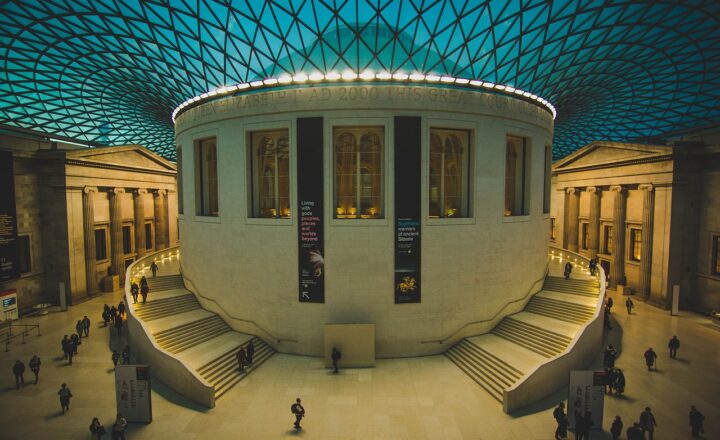
Artificial islands are fascinating feats of engineering and creativity, built in water bodies to serve various purposes, ranging from housing and recreation to industrial and cultural uses. These islands are often constructed on a large scale and come with numerous engineering challenges, environmental considerations, and innovative technologies. In this article, we will delve into the science and methods behind creating these extraordinary man-made landmasses.
1. Understanding Artificial Islands
Artificial islands are defined as land masses that are created by humans in bodies of water, usually through land reclamation techniques. They can be made from various materials, including rocks, concrete, and even sand, and can take on numerous shapes and sizes. The process of creating these islands involves significant planning, resource management, and engineering precision.
Some notable examples of artificial islands include:
- The Palm Jumeirah, UAE: This iconic island resembles a palm tree and hosts luxury properties, hotels, and beaches.
- Flevopolder, Netherlands: The largest artificial island in the world, created for agriculture and habitation through extensive land reclamation efforts.
- The World Islands, UAE: A collection of small islands designed to resemble a map of the world, used for luxury residences and tourism.
Artificial islands represent a blend of technological advancement and environmental engineering, pushing the boundaries of what is possible in contemporary construction.
2. The Engineering Fundamentals of Island Creation
To create an artificial island, engineers use several key methodologies and techniques that ensure stability, sustainability, and convenience for future inhabitants. The process is typically carried out in five main phases:
Phase 1: Planning and Design
Before any construction begins, extensive research is conducted to determine the island’s purpose, location, size, and environmental impacts. Engineers create blueprints and simulations to visualize how the island will look and function. Key considerations include:
- Geographical location and tidal patterns
- Environmental consequences and regulations
- Access to resources (water, electricity, etc.)
Phase 2: Site Preparation
Once the planning phase is complete, the site is prepared for construction. This involves:
- Surveying the underwater terrain and assessing soil composition.
- Mapping out boundaries using GPS technology.
- Clearing obstructions and ensuring the site is safe for construction.
Phase 3: Material Selection and Acquisition
The choice of materials used in constructing artificial islands is crucial to their durability and success. Common materials include:
- Dredged Sand and Silt: Most artificial islands utilize sand dredged from nearby sea floors to create a solid base.
- Geotextiles: Specially designed fabrics help prevent erosion and retain sediments under floating surfaces.
- Reinforced Concrete: Used for creating structures and barriers that withstand turbulent water and weather conditions.
Phase 4: Construction Techniques
The construction itself may use various methods based on the desired design and environmental conditions:
- Land Reclamation: Filling sections of the ocean with dredged material to create new land areas.
- Caissons and Breakwaters: Large concrete structures are submerged underwater to protect the island from waves and erosion.
- Floating Platforms: Some islands are built using floating methods where structures are anchored to the sea floor.
Phase 5: Landscaping and Infrastructure Development
With the foundational work completed, developers can now focus on landscaping, including the construction of roads, buildings, parks, and other amenities. These features are designed for the comfort of inhabitants while ensuring economic viability and aesthetic appeal.
3. Environmental Impacts and Considerations
While artificial islands offer numerous benefits such as increased space for urban development and tourism, they also pose environmental challenges. It is crucial to assess these impacts during the planning and execution stages.
Impact on Marine Ecosystems
Creating an artificial island often disturbs underwater habitats, leading to:
- Destruction of natural habitats for marine wildlife.
- Disruption of local ecosystems and food chains.
- Increased sedimentation and potential harm to coral reefs.
To mitigate these impacts, careful planning and ongoing environmental assessments are necessary. Engineers may consider using environmentally-friendly materials and creating artificial reefs around islands to promote marine life.
Long-term Sustainability
Sustainable design elements are crucial for the success of artificial islands, incorporating techniques such as:
- Renewable energy sources (solar, wind, etc.) to power the island.
- Water purification and recycling systems to reduce waste.
- Green infrastructure, including parks and gardens, to promote biodiversity.
Sustainability is key to ensuring that artificial islands contribute positively to both human habitation and the surrounding environment.
4. Notable Case Studies of Artificial Islands
Examining specific examples of successful artificial islands provides insights into innovative practices and underlying technologies.
The Palm Jumeirah, Dubai
Constructed in the early 2000s, the Palm Jumeirah measures approximately 5 kilometers long and is known for its palm tree-like structure. Significant engineering feats such as:
- Over 94 million cubic meters of sand was used for reclamation.
- Breakwaters were created to protect the island from strong waves.
- The project integrated high-end luxury homes with innovative planning solutions.
Flevopolder, Netherlands
Completed in the 1960s, Flevopolder is the largest artificial island, measuring around 970 square kilometers. It is a prime example of land reclamation using dikes and drainage systems to transform waterlogged areas into fertile farmland:
- Innovative polder technology was used to manage water levels.
- Integration of agriculture and urban settlements created a sustainable living environment.
These examples underscore the diverse applications and ecological considerations involved in creating artificial islands.
5. The Future of Artificial Islands
As global populations continue to grow and urban space becomes limited, artificial islands are likely to play an increasingly important role in urbanization and sustainable development. Future initiatives may leverage:
- Smart technologies to enhance living standards and sustainability.
- Innovative materials to improve resilience against climate change.
- Integrative urban planning that harmonizes with marine ecosystems.
In conclusion, the creation of artificial islands represents an extraordinary convergence of science and creativity, showcasing human ingenuity in overcoming geographical limitations. By understanding the technical, environmental, and social dimensions of these projects, we can better appreciate the potential and challenges that artificial islands bring to the modern world. With continued innovation and commitment to sustainability, these man-made structures may indeed hold the key to addressing future urbanization challenges on our planet.







